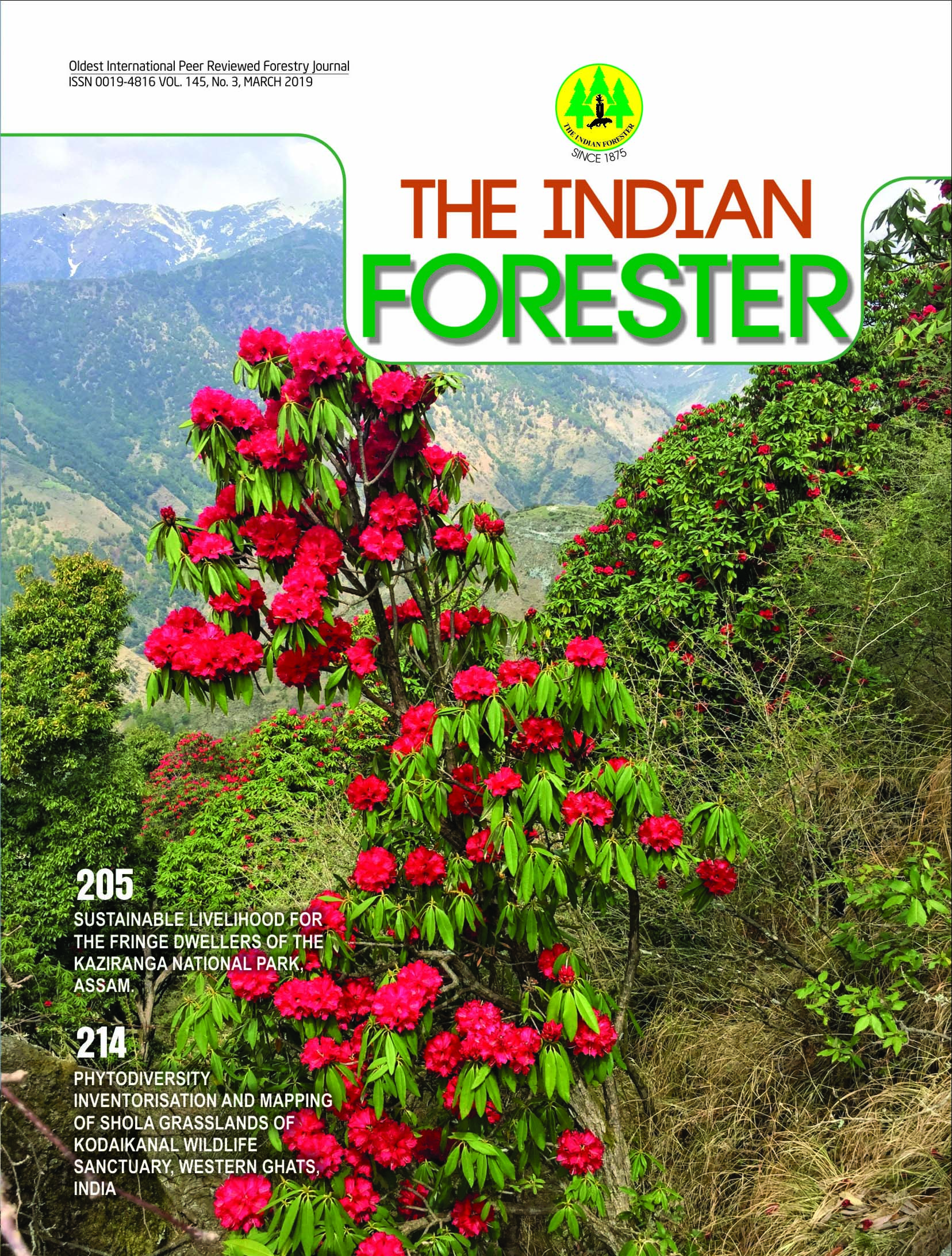Tree Composition Mapping and Environmental Role of Small Natural Areas in Dense Urban Setting: Case Study of Jadavpur University Campus in India
DOI:
https://doi.org/10.36808/if/2019/v145i3/144454Keywords:
Tree Population, Species Characterization, Bio-Diversity, C-Sequestration, Environment.Abstract
Indian cities, characterized by high density, rapid growth and on fast track developmental path, are losing greenery at an alarming rate due to infrastructure augmentation and reconstruction activities. Small and medium sized public and private properties with a rich repository of vegetation, particularly trees, have long been recognized as green oases within such dense 'grey' city fabrics. Institutional campuses come foremost in this list with their high potential in becoming green campuses in every sense. This paper presents the case of one such natural patch in a University in Kolkata (formerly, Calcutta), the fourth largest city of India. Endowed with matured trees, this open access zone plays significant ecological and societal functions for both the University community and the neighborhood. A Biodiversity Register created by students of the University in 2010-11 had recorded high bio-diversity in this part of the campus. The tree resources of this zone has been mapped using GPS tools for easy identification, better appreciation and management of this environmentally significant patch, the methods and findings of which have been presented here, along with an appraisal of its environmental benefits. Its Simpson's diversity index for trees was found to be 0.91 and carbon sequestration potential to be 3.28 t C/year.References
Angold P.G., Sadler J.P., Hill M.O., Pullin A., Rushton S., Austin K., Small E., Wood B., Wadsworth R., Sanderson R. and Thompson K., (2006). Biodiversity in urban habitat patches. Science of the Total Environment, 360: 196-204.
Coder R.D. (1996), Identified benefits of community trees and forests, University of Georgia, USA
Cornelis J. and Hermy M. (2004). Biodiversity relationships in urban and sub-urban parks in Flanders. Landscape and Urban Planning, 69: 385-401.
Chace J.F. and Walsh J.J. (2006). Urban effects on native avifauna: a review. Landscape and Urban Planning, 74: 46-69.
Crooks K.R., Suarez A. and Bolger D.T. (2004). Avian assemblages along a gradient of urbanization in a highly fragmented landscape. Biological Conservation, 115 (3): 451-462.
Dwyer J.F., Nowak D.J., Noble M.H. and Sisinni S.M. in review, Connecting People with Ecosystems in the 21st Century: An Assessment of our Nation's Urban Forests. Draft Urban Forest RPA.
Garden J., McAlpine C., Peterson A., Jones D. and Possingham H. (2006). Review of the ecology of Australian urban fauna. Aust. Ecol., 31:126-148.
Jana B.K., Biswas S., Majumder M., Roy P.K. and Mazumdar A. (2008). Carbon sequestration in urban and recreational forest: A case study at Banobitan in Kolkata, Philica, Article number 132.
Jim C.Y., (2008). Multipurpose census methodology to assess urban forest structure in Honkong. Arboriculture and Urban Forestry, 34 (6): 366-378.
Kulshrestha S.P. and Tomar A. (2007). Mapping using mobile GIS around Forest Research Institute and its significance in forestry. Indian Forester, 133 (1):153-47.
Mazerolle M.J. and Villard M. (1999). Patch characteristics and landscape context as predictors of species presence and abundance: A review. Ecoscience, 6 (1): 117-124.
McAliney M. (1993). Arguments for Land Conservation: Documentation and Information Sources for Land Resources Protection, Trust for Public Land, Sacramento, CA, Dec. 1993.
MHRD Report (2009). Project Implementation Plan, Ministry of Human Resource Development, Govt. of India. 129 pp.
Nowak D.J., (1994). Atmospheric carbon dioxide reduction by Chicago's urban forest, In Chicago's Urban Forest Ecosystem: Results of the Chicago Urban Forest Climate Project, (E.G. McPherson, D.J. Nowak, and R.A.
Rowntree, eds.) Gen. Tech. Rep. NE-186, USDA Forest Service, Northeastern Forest Experiment Station, Radnor, PA. Nowak D.J. (2011). Benefits of Community Trees, Brooklyn Trees, USDA Forest Service General Technical Report.
Phillips, Helen R.P., Knapp S. and Purvis A. (2017). Estimating the potential biodiversity impact of redeveloping small urban spaces: the Natural History Museum's grounds. Peer J., 5:e3914:1-29.
Raile G.K. and Leatherberry E.C. (1988). Illinois Forest Resource, Resour. Bull. NC-105, USDA Forest Service, North Central Forest Experiment Station, St. Paul, MN.
Tyagi S.N., Sharma M.L. and Khan J.A. (2007). Forest resource survey of Chhotaudepur forest division, Gujarat state with special reference to trees. Indian Forester, 133 (1): 21-49.
Wackernagel M. and Rees W. (1996). Our ecological footprint: Reducing Human Impact on the Earth, New Society Publishers, British Columbia, Canada.
Werner P. (2011). The ecology of urban areas and their functions for species diversity. Landscape and Ecological Engineering, 7 (2): 231-240.
Downloads
Downloads
Published
How to Cite
Issue
Section
License
Unless otherwise stated, copyright or similar rights in all materials presented on the site, including graphical images, are owned by Indian Forester.





